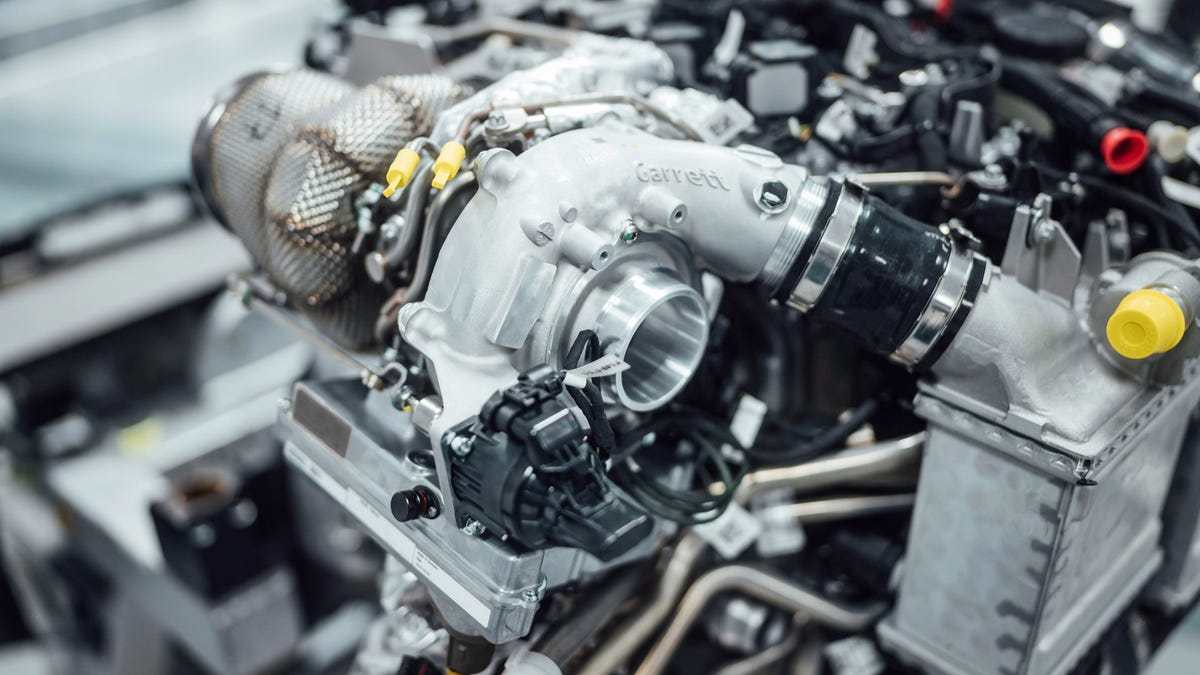Mercedes-AMG's electrified turbocharger comes from F1, could change turbos forever
The system uses an electric motor that helps get the turbo impeller up to speed quickly and keep it there even when not under load for peak responsiveness.

From a packaging standpoint, there's little downside to adding the Mercedes-AMG and Garrett-designed electrified turbo, given the minimal extra bulk.
Turbochargers are fantastic pieces of engineering. They take waste energy from an internal combustion engine and turn it into extra power, with very little loss of efficiency. The problem, historically speaking, is that turbochargers have had to choose between being small and responsive but limited in how much power they can make, or big and laggy, but capable of making enormous power.
There have been several attempts at eliminating this compromise over the years, with devices like sequential turbos and even twin-charging (that is pairing a supercharger with a turbocharger) finding some limited success, but at a high cost and added complexity. Now, thanks to its wild success in Formula 1, Mercedes-AMG believes it has a new solution: an electric motor, but not like one you're thinking of.
"We have clearly defined our goals for an electrified future. In order to reach them, we are relying on discrete and highly innovative components as well as assemblies. With this move we are strategically supplementing our modular technology and tailoring it to our performance requirements," said Tobias Moers, chairman of the board of management of Mercedes-AMG, in a statement. "In a first step this includes the electrified turbocharger -- an example of the transfer of Formula 1 technology to the road, something with which we will take turbocharged combustion engines to a previously unattainable level of agility."
This cutaway drawing shows how the electric motor is actually integrated into the center section of the turbocharger.
Now, most of you have likely seen the goofy, plastic "electric superchargers" that you can buy from sketchy online stores, but this isn't that. Mercedes' system uses a bespoke electric motor capable of bringing the turbocharger's impeller close to its 170,000-rpm operating speed without waiting for the exhaust gases to do the job.
One of the other benefits of this electric motor system is that even when the car is stopped, and the driver has their foot on the brake, the turbo can be kept at speed, so there is no delay in acceleration when they lay on the thin pedal on the right. The system can even use the electric motor to recover energy, similar to how regenerative braking works on electric cars.
Of course, keeping an electric motor that's bolted to a turbocharger -- not to mention the other sensitive electronics needed to make this system work -- alive in that hellishly hot environment takes some special consideration. To help improve longevity for the system, the whole thing is water-cooled, electronics included.
Mercedes has confirmed that the first engine to make use of this technology will be the four-cylinder M139 -- the hottest version of which produces a brain-breaking 416 horsepower. This new electric turbo system won't add power per se, but it should go a long way toward making this tiny 2.0-liter terror of an engine much more responsive.

